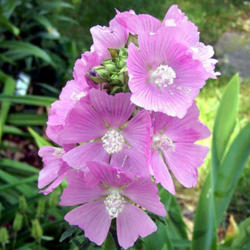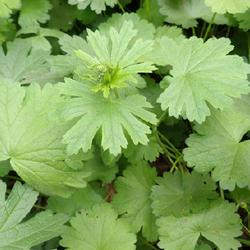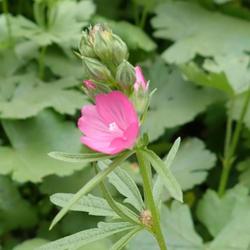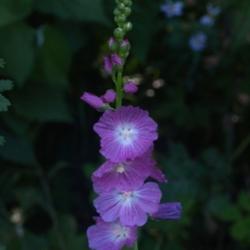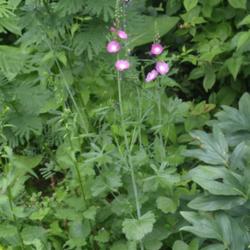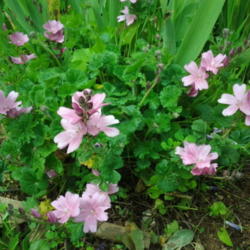"Sidalcea malviflora is somewhat variable in appearance and there are many subspecies. In general it is a perennial herb growing from a woody caudex and rhizome, its stem reaching about 60 centimeters in maximum height. It is sparsely to densely hairy in texture. The leaf blades are variable in shape, but are often divided deeply into several lobes. The inflorescence is a dense or loose array of several flowers. The flower has five petals in shades of bright to dark pink, often with white veining, and measuring one to over three centimeters in length.
There are over ten subspecies, some of which are endemic and rare:
S. m. ssp. dolosa is endemic to the San Bernardino Mountains.
S. m. ssp. patula (Siskiyou checkerbloom) is limited to southern Oregon and far northern California.
S. m. ssp. purpurea (purple-stemmed checkerbloom) is endemic and limited to the California coast just north of the San Francisco Bay Area.
Sidalcea malviflora is native to the west coast of the United States from Washington to California as well as Baja California, where it is a common plant of the chaparral and other habitat types."
Taken from wikipedia's page at:
http://en.wikipedia.org/wiki/S...
